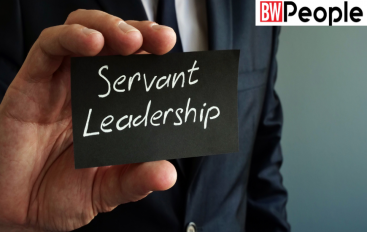Leaders Should Ensure Transparent And Inclusive Communication


Sudeep, could you elucidate your views on what exactly you think servant leadership is and how this kind of leadership is being practised in companies today?
One of my favourite quotes is, "You don't build a business; you build people, and they build a business." I think many business leaders tend to forget that. Servant leadership is not just a buzzword or a fad; it's rooted in practicality. When you focus on serving your team and putting their well-being and needs at the centre, you're building a business for the long term, as opposed to short-term gains.
Servant leadership benefits both the company and the leader. It creates a workforce that feels heard, respected, and involved, leading to higher engagement and connection. As a leader, it makes your job easier because you lead through influence, relationships, and authority rather than control and toxicity. This approach helps in building an innovative, collaborative culture that retains talent—a challenge many organizations face today.
In terms of examples, there are plenty in the Indian ecosystem. Figures like Mahatma Gandhi and leaders such as Nelson Mandela and Martin Luther King practiced servant leadership. Jack Welch, who led GE, emphasized the growth of people as the foundation of great people practices. I've also had the privilege of working with organizations like GSK, Walmart, and Upstox, where servant leadership principles are deeply ingrained in their leadership styles.
How can putting the needs of your team first benefit the company, the leader, and the organization as a whole? Do you believe that this kind of leadership style is sustainable in the long term?
Yes, absolutely. Servant leadership is a path to sustainable growth, especially in today's dynamic business landscape. Leaders are often faced with tough questions and challenges. The answer to these challenges depends on whether you prioritize short-term gains or long-term sustainability. Servant leadership aligns with the latter.
While it's not always easy to practice, it results in a more engaged and connected workforce, making leadership more effective. In the long term, it helps build organizations that are innovative and collaborative, creating a culture that retains talent—an essential aspect for companies today.
How can this leadership style be applied in a remote work environment? What strategies or approaches can leaders use to apply servant leadership in such settings?
Applying servant leadership in a remote work environment is crucial, especially given the challenges we face today. Three major challenges include uncertainty, remote or hybrid work, and the rise of cult-style leadership. In such an environment, leaders can take specific steps.
First, implement listening mechanisms, ensuring they are real-time and inclusive. It's essential to close the loop by sharing what you've learned and what actions you plan to take based on employee feedback.
Second, leaders need to become more approachable and connected. Engage in unstructured, unscripted conversations with teams, like "ask me anything" sessions. This helps in demonstrating empathy and maintaining meaningful connections.
What is one common challenge that leaders face when trying to practice servant leadership, and how can they overcome it?
One common challenge leaders face when trying to practice servant leadership is the perception of partiality. Employees may feel that a leader is favoring some individuals or teams over others. While leaders rarely do this intentionally, it can be a perception issue.
To overcome this challenge, leaders should ensure that communication is transparent and inclusive. By sharing what they've heard, what actions they're taking, and by encouraging open dialogue, they can help address this perception and create a more balanced environment.
Can you share a personal leadership style or approach that you've practiced within your own organization or in your experience? How has this approach been effective for you in leading your teams?
Throughout my career, I've aimed to maintain a people-centric approach to decision-making. Regardless of the organization's scale or industry, my focus has been on ensuring that people's needs and well-being are at the forefront of my decisions.
For example, at Upstox, even during challenging times, our priority has always been to take care of our people. This approach has helped build trust and resilience within the organization. While we may not always execute perfectly, the conscious effort to maintain a people-centric view in decision-making has been effective in leading teams and achieving our goals.
If you could identify one key step that all leaders can take to build a servant leadership mindset, what would it be? How can leaders begin to shift their mindset toward servant leadership?
The first step is self-awareness. Leaders should take time for introspection and ask themselves tough questions. They need to reflect on whether they are truly modeling the behaviours they want to see in their teams. Are they rewarding the right behaviors? Are they making decisions with a long-term horizon in mind?
By practicing self-awareness and being open to change, leaders can begin to shift their mindset toward servant leadership. It's a journey, not a destination, and this self-awareness is the first step on that path.
Is there any particular challenge or instance during your career that stands out when you tried to introduce a new leadership concept or practice?
Sudeep: Certainly. One significant challenge I've encountered is related to the evolution of performance management practices. This challenge was consistent across various organizations, including Accenture, GSK, and Walmart.
Leaders attempted to introduce radical changes in how performance was measured, incentivized, and rewarded. For instance, at GSK, Sir Andrew Whitty led a transformative shift in performance management. It was not a top-down approach but rather a conversation that took place across the organization over many months. As HR leaders, we continued these conversations with employees.
While this change was not easy, the key takeaway was not just what was done, but how it was done. It involved engaging the entire organization in a thoughtful and inclusive manner to drive change effectively.